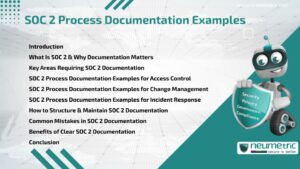Table of Contents
ToggleIntroduction
In the fast-paced landscape of the digital era, our reliance on data has undergone a profound transformation. From personal information to business intelligence, data serves as the lifeblood of modern operations. This increased digitization, however, comes hand in hand with a surge in cyber threats, necessitating a robust framework for safeguarding sensitive information.
Within this context, Australia has forged a unique mosaic of data security standards. These regulations, shaped by the dynamic evolution of technology, have become an integral part of safeguarding both individual privacy & organisational integrity. A brief exploration of the historical context leading to the development of these standards provides insight into the intricate tapestry that organisations must navigate to ensure compliance.
The stringent data security standards in Australia are not merely bureaucratic requirements but are rooted in a deeper rationale. Beyond legal obligations, compliance with these standards is fundamentally linked to building & maintaining consumer trust.
Understanding Australian Data Security Standards
Overview of Key Regulations
- Privacy Act 1988
The Privacy Act of 1988 is the foundational legislation shaping Australia’s approach to data protection & privacy. Enacted to safeguard individuals’ personal information, the Privacy Act establishes a comprehensive framework that organisations must adhere to in their data management practices. The primary objective is to strike a balance between the benefits of information use for innovation & the protection of individuals’ privacy rights.
- Australian Privacy Principles (APPs)
The Australian Privacy Principles (APPs) represent a comprehensive set of guidelines under the Privacy Act of 1988, designed to regulate the handling of personal information by organisations across various sectors. It consists of 13 principles that serve as a compass for entities managing personal data in Australia.
- Notifiable Data Breaches (NDB) Scheme
The Notifiable Data Breaches (NDB) scheme stands as a pivotal component within the Australian data security landscape, adding an extra layer of transparency & accountability in the event of a data breach.
Implications of Non-Compliance
In the realm of Australian data security standards, understanding the ramifications of non-compliance is paramount. There exists multifaceted consequences faced by organisations that fail to adhere to the established regulations, emphasising both the legal & reputational risks associated with inadequate data protection measures.
- Legal Consequences
Examining the potential legal ramifications for organisations that do not meet the stipulated data security standards. This includes an overview of the penalties & fines outlined in the Privacy Act of 1988 & other relevant legislation.
- Reputational Risks
Unpacking the enduring impact of data breaches on an organisation’s reputation. Case studies & real-world examples illustrate how incidents of non-compliance can erode public trust & confidence, resulting in long-term reputational damage.
- Financial Implications
Analysing the financial consequences of non-compliance, including the direct costs associated with legal penalties, regulatory fines & indirect costs related to reputational recovery efforts & loss of business.
- Operational Disruptions
Highlighting the potential operational disruptions that may arise from a failure to comply with data security standards. This includes the strain on internal resources, disruptions to regular business activities & the challenges of rebuilding trust internally.
- Mitigation & Remediation Strategies
Offering insights into strategies for mitigating the legal & reputational risks associated with non-compliance. This includes the development of robust incident response plans, proactive engagement with regulatory bodies & ongoing efforts to enhance data security measures.
Key Components of Data Security Standards
In the pursuit of Australian data security compliance, organisations must navigate the intricate landscape of key components integral to safeguarding sensitive information.
Data Collection & Storage
- Minimising Data Collection: Exploring strategies for organisations to limit the collection of personal information to what is strictly necessary, reducing the potential risk & scope of a data breach.
- Secure Storage Practices: Discussing best practices for securely storing sensitive data, including encryption, access controls & regular audits to maintain the integrity of stored information.
Data Access Controls
- Role-Based Access: Highlighting the importance of implementing role-based access controls to ensure that individuals only have access to the information necessary for their specific roles within the organisation.
- Authentication & Authorization: Delving into the crucial aspects of authentication & authorization processes, which are fundamental to controlling & monitoring access to sensitive data.
Data Encryption
- Importance of Encryption: Explaining the significance of encryption in protecting data both in transit & at rest, mitigating the risk of unauthorised access in the event of a security breach.
- Implementing Encryption Protocols: Offering guidance on the implementation of encryption protocols & technologies, taking into consideration industry best practices & regulatory requirements.
By understanding & implementing these key components, organisations can fortify their data security posture & align with Australian data security standards. This proactive approach not only mitigates the risk of data breaches but also establishes a foundation for building & maintaining consumer trust, a cornerstone of compliance in the digital age.
Privacy Impact Assessments (PIAs)
Privacy Impact Assessments (PIAs) constitute a vital tool in the arsenal of organisations aiming for robust compliance with Australian data security standards. It is important to understand the concept of PIAs, their significance & the pivotal role they play in ensuring that data processing activities align with privacy principles.
Explanation of PIAs
Defining PIAs: Providing a comprehensive definition & understanding of Privacy Impact Assessments. Delving into their purpose as systematic evaluations that identify & mitigate the potential privacy risks associated with data processing activities.
When & How to Conduct a PIA
- Determining the Need: Outlining scenarios & circumstances that necessitate the conduct of a PIA, emphasising the proactive nature of these assessments.
- Step-by-Step Process: Breaking down the steps involved in conducting a PIA, from scoping & data mapping to risk assessment & the formulation of risk mitigation strategies.
Integrating PIAs into the Compliance Framework
- Aligning with Regulatory Requirements: Emphasising how PIAs are not only a best practice but also a requirement in certain situations under Australian data security standards.
- Embedding in Organisational Processes: Exploring strategies for seamlessly integrating PIAs into the broader compliance framework, ensuring they become a routine aspect of new projects & initiatives.
By incorporating PIAs into their compliance strategy, businesses not only enhance their ability to adhere to data security standards but also demonstrate a commitment to responsible & ethical data processing practices, building trust among consumers & stakeholders alike.
Compliance Challenges & Solutions
Navigating the landscape of Australian data security standards often comes with its set of challenges for organisations. This section unravels the common hurdles faced in achieving compliance & provides strategic solutions for overcoming these obstacles, ensuring a proactive & effective approach to data security.
Common Challenges in Achieving Compliance
- Resource Constraints: Addressing the challenge of limited resources, both in terms of finances & skilled personnel & exploring strategies to optimise existing resources for effective compliance.
- Evolving Technology Landscape: Recognizing the rapid evolution of technology & the challenge it poses to compliance efforts, emphasising the need for adaptive & scalable solutions.
- Interconnected Regulatory Requirements: Navigating the complexity of interconnected regulatory frameworks, where adherence to one standard may impact compliance with others.
Solutions & Best Practices
- Regular Audits & Assessments: Advocating for the importance of regular internal audits & assessments to identify gaps in compliance & proactively address potential issues.
- Continuous Monitoring & Improvement: Proposing a culture of continuous improvement, where organisations not only meet the standards but actively seek ways to enhance their data security measures.
- Integration into Organisational Culture: Encouraging the integration of compliance measures into the organisational culture, making data security a shared responsibility at all levels.
Overcoming these challenges not only ensures adherence to Australian data security standards but also positions the organisation as a proactive steward of data, capable of navigating the evolving landscape of digital security with resilience & agility.
Future Trends in Australian Data Security
As the digital landscape continues to evolve, anticipating & preparing for future trends is crucial for organisations committed to maintaining robust data security standards in Australia. This section explores emerging trends that are likely to shape the future of data security, providing insights for proactive measures & adaptation.
Evolving Threat Landscape
- Rise of Advanced Threats: Discussing the emergence of sophisticated cyber threats, including artificial intelligence-driven attacks & the need for advanced threat detection & response mechanisms.
- IoT Security Challenges: Exploring the growing security concerns associated with the Internet of Things (IoT) devices & the necessity for robust measures to secure the expanding network.
Anticipated Changes in Regulations
- Data Sovereignty & Localization: Addressing the potential trend towards increased data sovereignty regulations, requiring organisations to store & process data within national borders.
- Enhanced Consumer Rights: Exploring potential amendments to privacy laws, focusing on empowering consumers with more control over their personal information.
Preparing for Future Compliance Challenges
- Adoption of Cybersecurity Frameworks: Advocating for the adoption of internationally recognized cybersecurity frameworks to enhance organisational resilience & readiness for evolving threats.
- Integration of AI in Compliance Processes: Discussing the potential role of artificial intelligence in automating & improving compliance processes, facilitating quicker response to emerging threats.
By proactively considering these future trends, organisations can position themselves to not only meet but exceed future data security standards. Embracing a forward-thinking approach allows businesses to adapt to changing regulations, emerging threats & technological advancements, ensuring that their data security measures remain effective & resilient in the face of evolving challenges.
Conclusion
In conclusion, this in-depth examination of Australian Data Security Standards underscores the intricate framework that organisations must navigate to ensure the protection of sensitive information. The journey begins with an understanding of foundational regulations such as the Privacy Act of 1988 & the Australian Privacy Principles, forming the backbone of compliance efforts.
The exploration of key components, including data collection, access controls & encryption, provides practical insights into how organisations can fortify their data security posture. The proactive use of Privacy Impact Assessments (PIAs) emerges as a strategic tool to identify & mitigate privacy risks, highlighting the importance of integrating such assessments seamlessly into organisational processes.
Addressing common compliance challenges & providing forward-looking strategies, Ultimately, achieving & maintaining compliance with Australian data security standards is portrayed not just as a regulatory obligation but as a strategic imperative for organisations to thrive in an ever-evolving digital landscape. It concludes by portraying compliance not merely as a regulatory box to tick but as an ongoing commitment to innovation, adaptability & the protection of stakeholder trust in an ever-evolving digital landscape.
FAQ’s
Why is compliance with Australian Data Security Standards essential?
Compliance is crucial as it safeguards sensitive information, upholds consumer trust & protects organisations from legal repercussions. It’s not just a box to tick; it’s a strategic imperative in our digital age.
What are the key components of data security standards?
Key components include mindful data collection, robust access controls & encryption practices. These ensure not only legal adherence but also fortify an organisation’s data security posture, vital in the ever-evolving digital landscape.
How do Privacy Impact Assessments (PIAs) contribute to compliance?
PIAs are proactive tools that help identify & mitigate privacy risks. By integrating them into organisational processes, we can ensure responsible data processing practices & stay ahead in the realm of Australian data security.
What challenges do organisations face in achieving compliance & how can they overcome them?
Common challenges include resource constraints & the evolving technology landscape. Solutions involve regular audits, a culture of continuous improvement & seamlessly integrating compliance measures into organisational culture.
What future trends in Australian data security should organisations prepare for?
Organisations should anticipate advanced cyber threats, changes in regulations like increased data sovereignty & the adoption of technologies such as AI in compliance processes. Preparing for these trends ensures ongoing resilience in data security practices.





